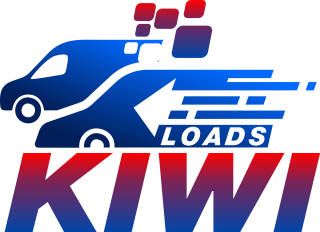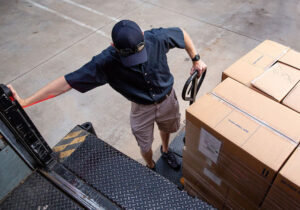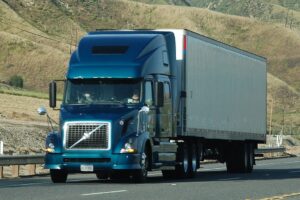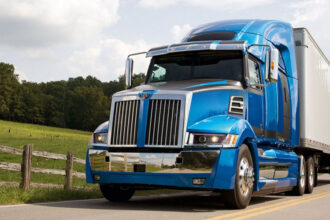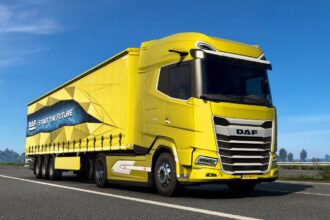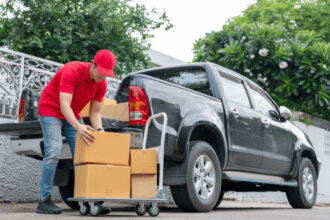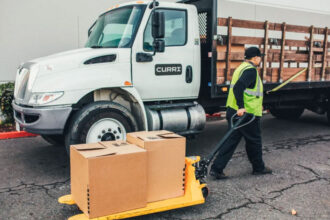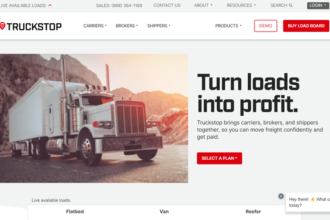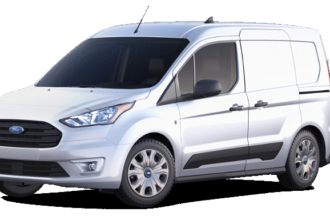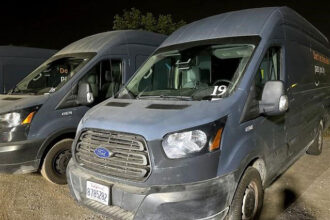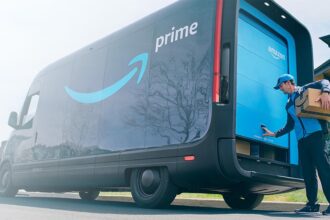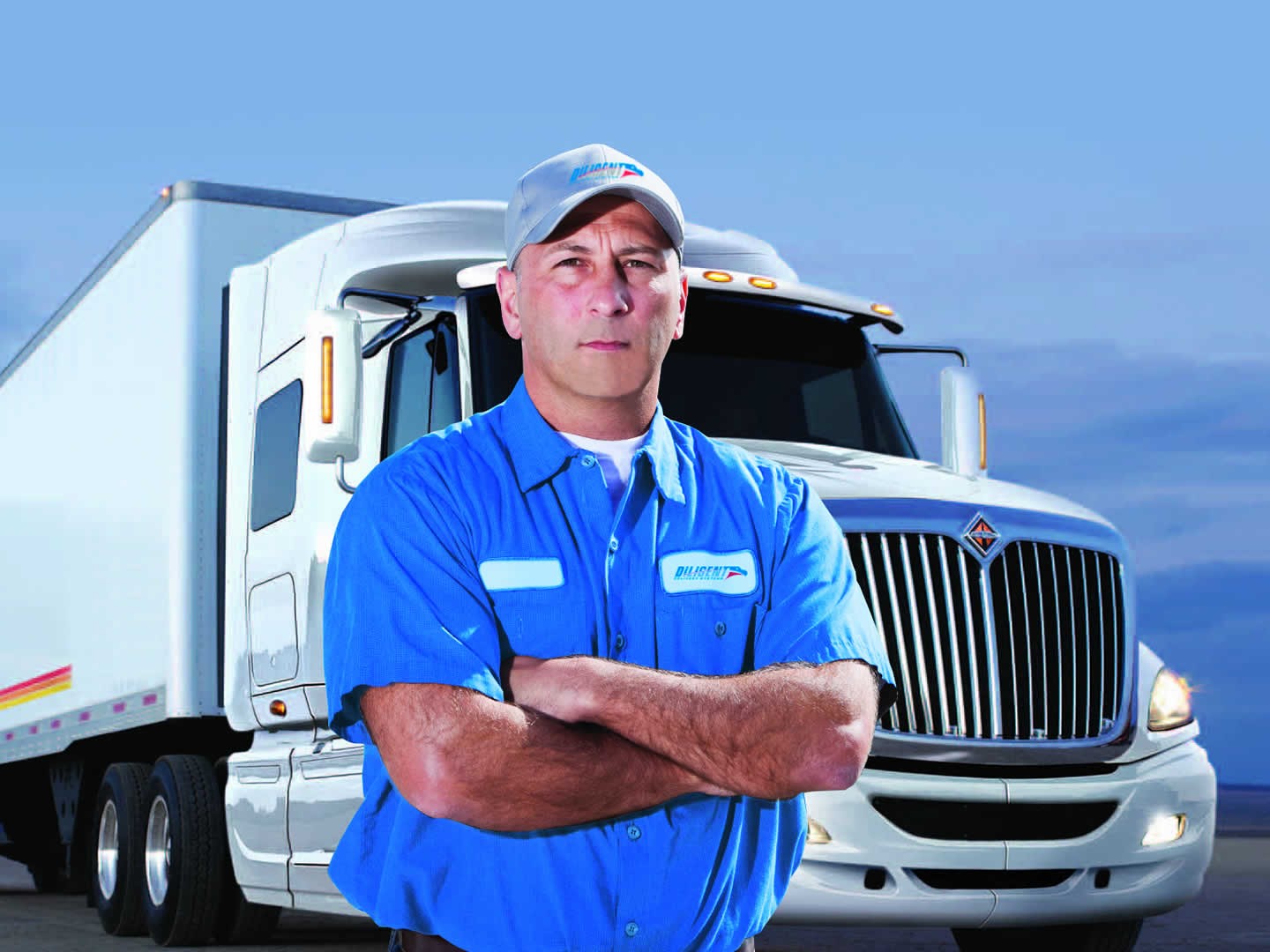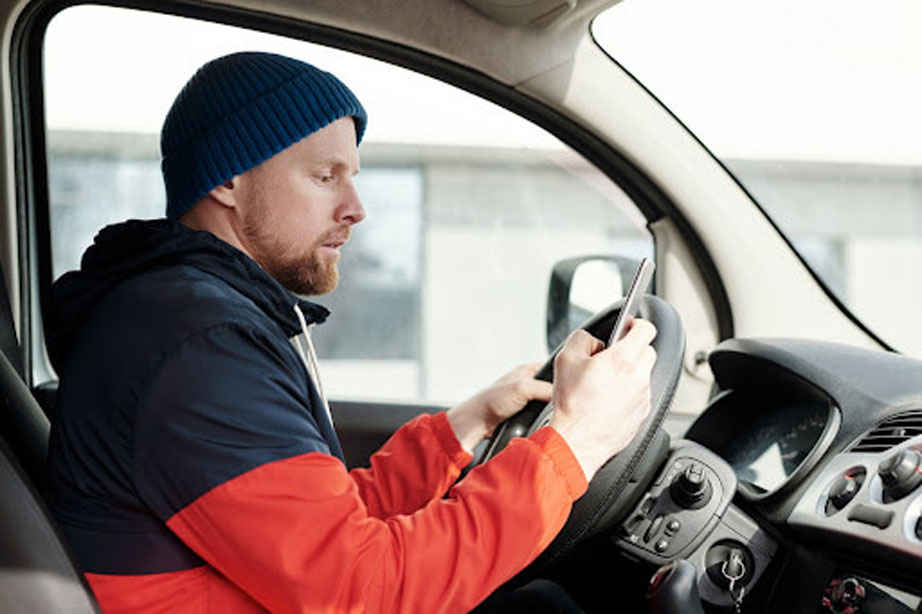Table of Contents
Are you ready to embark on an enlightening journey into the realm of last mile delivery optimization? If you’re wondering, what exactly is the “last mile” in delivery? Well, picture this: you’ve ordered something online, and it’s making its way to your doorstep. The last leg of its journey, from the distribution center to your home, is the “last mile.” It’s that crucial stretch where efficiency can make the difference between a delighted customer and a disgruntled one.
Whether you’re a business owner aiming to streamline your delivery operations or a consumer eager to understand what makes that package arrive so swiftly and smoothly, you’re in for a treat. Unravel the secrets of last-mile delivery optimization methods that genuinely work. So, fasten your seatbelt (or delivery seat?) and explore a world where packages zoom like superheroes and every doorstep has a happy ending. Ready?
Here are the last mile delivery optimization methods that really work:
- Optimize Routes
- Track Deliveries in Real-Time
- Define Delivery Windows
- Implement Smart Warehousing Solutions
- Utilize Crowdsourced Delivery Networks
- Incorporate Electric Vehicles for Eco-Friendly Deliveries
- Install Delivery Lockers for Secure Drop-Offs
- Optimize Load Distribution for Efficient Deliveries
- Leverage Big Data Analytics for Actionable Insights
- Provide Employee Training
Overview of Last Mile Delivery Optimization Methods That Really Work
How to Choose Last Mile Delivery Optimization Methods That Really Work
Pros & Cons of Last Mile Delivery Optimization Methods That Really Work
What to Watch Out For Last Mile Delivery Optimization Methods That Really Work
Pro Tips
Recap
1. Optimize Routes
- Reduces delivery time and costs by optimizing routes significantly.
- Contribute to lower fuel consumption and emissions.
- Increases capacity by accommodating more deliveries per day.
- Improves customer satisfaction due to accurate delivery ETAs.
- Enhances handling of complex variables like traffic and weather.
- Ensures timely deliveries through real-time tracking and adjustments.
- Reduces wear and tear on delivery vehicles with efficient routes.
- Maximizes resource utilization for optimized operations.
- Demands time during initial setup and training.
- Involves costs that may deter your small business.
- Risks overreliance on technology, potentially missing manual adjustments.
- Faces potential disruptions due to unexpected road closures or accidents.
- Utilize advanced route planning software like Route4Me or OptimoRoute.
- Consider integrating GPS tracking and real-time traffic data for dynamic route adjustments.
- Update and fine-tune routes based on historical data and changing conditions.
- Train drivers to effectively use routing software and adapt to unexpected changes.
2. Track Deliveries in Real-Time
- Provides enhanced visibility
- Improves customer experience
- Enables efficient issue resolution
- Boosts customer satisfaction
- Enhances operational efficiency
- Offers data for analytics
- Involves high costs
- Requires technical expertise
- Raises privacy concerns
- Utilizes GPS technology
- Offers mobile apps
- Sends automated notifications
- Establishes a feedback loop
3. Define Delivery Windows
- Enhances customer experience and expectation management.
- Allows for efficient route planning and resource allocation.
- Reduces the chances of missed deliveries and failed attempts.
- Enhances customer satisfaction and builds loyalty.
- Improves operational efficiency.
- Optimizes the utilization of delivery resources.
- Demands accurate estimation of delivery times.
- Can result in customer dissatisfaction if delivery times are not met.
- Requires additional coordination efforts with customers.
- Set clear timeframes for deliveries, such as morning, afternoon, or evening slots.
- Utilize software and data analytics to predict delivery times accurately.
- Communicate delivery windows to customers during order confirmation to manage expectations.
- Monitor and optimize delivery windows based on historical data and customer preferences to enhance service quality.
- Train delivery personnel to adhere to specified timeframes and provide excellent customer service during deliveries.
4. Implement Smart Warehousing Solutions
- Boosts productivity and accuracy through smart warehousing.
- Streamlines inventory management and order processing efficiently.
- Optimizes storage to reduce expenses effectively.
- Adapts to changing order volumes and business growth seamlessly.
- Ensures precise stock management with real-time tracking.
- Expedites picking and packing processes through automation.
- Leads to happier customers with faster deliveries and fewer errors.
- Contributes to higher profitability by reducing labor and storage expenses.
- Demands upfront capital for implementing smart warehousing.
- Involves technical complexity when integrating automation.
- Requires ongoing upkeep for sustained automation performance.
- May displace manual jobs, affecting the workforce.
- Employ RFID or barcode systems to monitor stock in real time.
- Implement automated picking and packing systems to enhance operational efficiency.
- Invest in robust software to streamline warehouse processes.
- Provide training to staff to ensure the effective operation and maintenance of automated systems.
5. Utilize Crowdsourced Delivery Networks
- Offers flexibility by tapping into independent drivers to manage fluctuating delivery demands.
- Saves costs by using local drivers instead of a large in-house delivery fleet.
- Enables easy scalability to adapt to seasonal changes or unexpected demand surges.
- Expand delivery coverage to reach remote or less accessible areas.
- Boost speed and efficiency with local drivers.
- Reduce overheads by cutting costs associated with traditional logistics.
- Pose reliability challenges due to varying service quality.
- Limit control over driver schedules and processes.
- Raise data security concerns when sharing customer data.
- Establish clear communication and guidelines for drivers.
- Implement monitoring and feedback mechanisms for service quality.
6. Incorporate Electric Vehicles for Eco-Friendly Deliveries
- Gains momentum as a sustainable option for last-mile delivery, reducing the environmental footprint.
- Aligns with the growing demand for eco-friendly solutions in logistics and transportation.
- Reduces air pollution and greenhouse gas emissions with zero emissions.
- Offers cost savings with lower fuel and maintenance costs compared to traditional vehicles.
- Leverages government incentives, tax credits, or subsidies for EV adoption in many regions.
- Enhances a company’s reputation and appeals to environmentally conscious customers, thanks to a positive brand image.
- Comes with a limited range, requiring careful route planning due to its shorter driving range compared to traditional vehicles.
- Faces challenges related to charging infrastructure, as the availability and accessibility of charging stations can be limited in some areas.
- Involves higher upfront costs, as EVs tend to have a higher initial purchase price than conventional vehicles.
- Requires a longer refueling time, as charging an EV typically takes longer than filling a gas tank.
- Consider the type of EV that suits your delivery needs, such as battery electric vehicles (BEVs) or plug-in hybrid electric vehicles (PHEVs).
- Evaluate the charging infrastructure in your delivery area and invest in charging stations if necessary.
- Train drivers to handle EVs and plan routes that optimize the vehicle’s range.
- Monitor government policies and incentives related to EV adoption to maximize cost savings.
- Promote your eco-friendly delivery approach to attract environmentally conscious customers and boost brand image.
7. Install Delivery Lockers for Secure Drop-Offs
- Enhances delivery security and prevents package theft.
- Provides a convenient and contactless delivery option for customers.
- Streamlines the drop-off process for delivery drivers.
- Increases customer satisfaction by offering a secure and flexible delivery method.
- Reduces the risk of package damage or loss.
- Allows for 24/7 accessibility for customers to collect their packages.
- Invest in initial installation and maintenance; it may require a significant investment.
- Consider package size capacity; some locker systems have limited package size capacity.
- Provide user guidance; customers may need guidance on how to use the lockers initially.
- Offer delivery locker solutions with unique features.
- Integrate locker systems with delivery management software for a seamless process.
- Locate lockers in easily accessible areas like apartment complexes, retail stores, or public spaces.
- Provide customers with a unique code or QR code to access their locker and retrieve their package securely.
8. Optimize Load Distribution for Efficient Deliveries
- Maximizes delivery efficiency.
- Reduces fuel consumption and environmental impact.
- Minimizes vehicle wear and tear.
- Enhances route planning.
- Saves costs through reduced fuel consumption.
- Boosts customer satisfaction with timely deliveries.
- Demands advanced logistics and software.
- Involves initial setup costs for optimization tools.
- Entails a learning curve for implementation.
- Optimize load distribution by distributing packages efficiently in delivery vehicles.
- Utilize advanced software and algorithms to determine optimal load distribution based on factors like package size, weight, delivery location, and traffic conditions.
- Enhance last-mile delivery efficiency, reduce delivery times, and contribute to sustainability efforts by minimizing fuel consumption and emissions.
>>>PRO TIPS: Flatbed Trailer Business: How to Find Loads
9. Leverage Big Data Analytics for Actionable Insights
- Revolutionizes last-mile delivery through valuable insights and optimizations.
- Enhances route planning with efficient consideration of traffic, weather, and historical data.
- Enables real-time tracking to monitor delivery progress for timely arrivals and customer satisfaction.
- Empowers data-driven decisions, reduces operational costs, and enhances performance.
- Implement stringent data security measures to protect sensitive information.
- Allocate a significant upfront investment for initial setup costs.
- Train employees to use and interpret data, which can be time-consuming.
- Integrate big data analytics tools with various systems, including GPS tracking and customer databases.
- Utilize predictive analytics for demand forecasting to strategically stock inventory.
- Manage delivery fleets in real-time, rerouting drivers when necessary and optimizing delivery schedules.
- Update and maintain the analytics system to ensure accuracy and efficiency in last-mile delivery operations.
10. Provide Employee Training
- Enhances employee performance and confidence.
- Improves safety practices during last-mile delivery.
- Ensures employees are aware of efficient delivery techniques.
- Reduces errors and delivery delays.
- Enhances efficiency in last-mile delivery operations.
- Boosts customer satisfaction through accurate and timely deliveries.
- Reduces incidents and accidents during deliveries.
- Improves adherence to delivery schedules.
- Requires an initial investment for training programs.
- Demands ongoing training and updates.
- May face resistance from employees.
- Could constrain delivery schedules during training.
- Cover various aspects of employee training programs, including route planning, vehicle maintenance, and customer interaction.
- Provide practical experience through interactive training sessions and simulations.
- Keep employees informed about the latest trends and technologies in last-mile delivery with regular refresher courses and updates.
- Include safety measures like defensive driving techniques and accident prevention strategies in training programs.
Overview of Last Mile Delivery Optimization Methods That Really Work
In the world of last-mile delivery optimization, a series of tried-and-true methods can make your business stand out. These techniques, such as route optimization and real-time tracking, enhance efficiency and customer satisfaction. Smart warehousing, crowdsourced delivery, and electric vehicles are revolutionizing the logistics landscape, reducing costs and promoting sustainability. Methods like delivery lockers and load optimization ensure flexibility and efficiency, while big data analytics provide invaluable insights for decision-making. Finally, comprehensive employee training ensures a skilled and capable delivery team, setting the stage for success in last-mile delivery optimization.
How to Choose Last Mile Delivery Optimization Methods That Really Work
Selecting effective last-mile delivery optimization methods is crucial for your business’s success. These methods, already operational, promise efficient, timely deliveries that leave your customers delighted. Key strategies include route optimization, which ensures vehicles navigate efficiently, saving time and fuel. Advanced fleet management systems provide control and visibility over your vehicles, enhancing productivity and reliability. Data analytics helps you understand customer preferences, personalize services, and allocate resources effectively. Real-time tracking and communication systems offer transparency and superior customer service. Lastly, environmental sustainability practices reduce your carbon footprint and appeal to eco-conscious customers. These methods empower your business to thrive in the competitive last-mile delivery landscape.
>>>GET SMARTER: Last Mile vs. Middle Mile vs. First Mile Delivery Business
Pros & Cons of Last Mile Delivery Optimization Methods That Really Work
Pros
- Streamline routes and optimize scheduling.
- Reduce fuel consumption and vehicle wear and tear.
- Ensure timely and accurate deliveries.
- Utilize advanced tracking systems.
- Optimize routes to reduce carbon emissions.
Cons
- Implement optimization methods with upfront investments.
- Address potential resistance from drivers.
- Deal with complexity, especially in larger fleets or high-traffic areas.
- Manage customer data securely.
- Consider potential reductions in personal interactions.
What to Watch Out For Last Mile Delivery Optimization Methods That Really Work
- Beware of over-optimization.
- Don’t forget about data security.
- Be wary of tech glitches.
- Keep an eye on costs.
- Watch for employee burnout.
- Avoid over-promising.
- Monitor customer feedback.
- Stay compliant.
Pro Tips
- Harness technology to your advantage.
- Prioritize customer communication.
- Invest in employee training.
- Use data analytics.
- Optimize delivery windows.
- Leverage local warehousing.
- Implement inventory management software.
- Diversify delivery modes.
- Embrace sustainable practices.
- Focus on continuous improvement.
- Collaborate with local partners.
- Streamline return processes.
- Enhance package security.
Recap
In summary, last-mile delivery optimization methods offer substantial benefits in terms of efficiency, cost savings, and customer satisfaction. However, these advantages come with initial investments and challenges related to implementation. Finding the right balance between automation and maintaining a human touch is key to achieving success in the world of last-mile delivery. So, take these insights, harness the power of optimization, and make those final miles count!
